Christina M. Gschwandtner
Visit to download the full and correct content document: https://ebookmass.com/product/ways-of-living-religion-philosophical-investigations-int o-religious-experience-christina-m-gschwandtner/
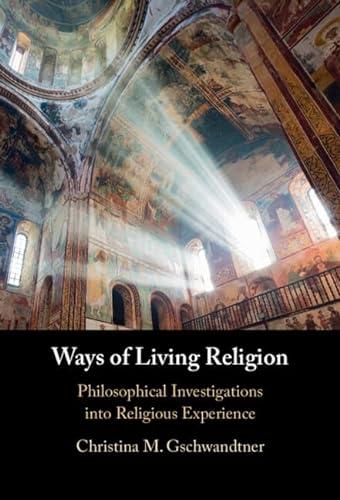
More products digital (pdf, epub, mobi) instant download maybe you interests ...
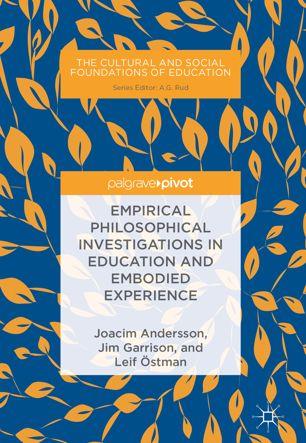
Empirical Philosophical Investigations in Education and Embodied Experience 1st ed. Edition Joacim Andersson
https://ebookmass.com/product/empirical-philosophicalinvestigations-in-education-and-embodied-experience-1st-ededition-joacim-andersson/
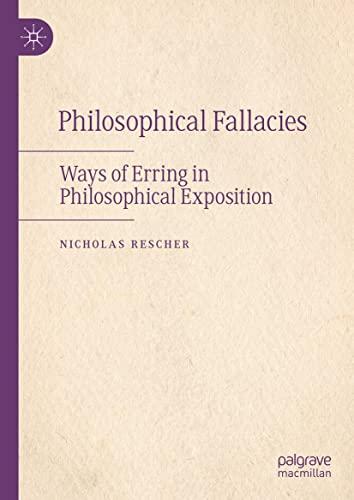
Philosophical Fallacies: Ways of Erring in Philosophical Exposition 1st ed. 2022 Edition Nicholas Rescher
https://ebookmass.com/product/philosophical-fallacies-ways-oferring-in-philosophical-exposition-1st-ed-2022-edition-nicholasrescher/
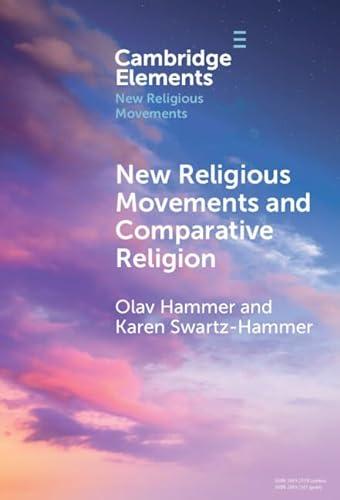
New Religious Movements and Comparative Religion Hammer
https://ebookmass.com/product/new-religious-movements-andcomparative-religion-hammer/
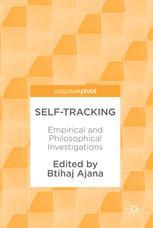
Self-Tracking: Empirical and Philosophical Investigations 1st Edition Btihaj Ajana (Eds.)
https://ebookmass.com/product/self-tracking-empirical-andphilosophical-investigations-1st-edition-btihaj-ajana-eds/
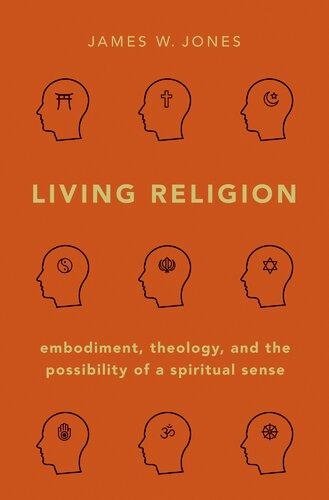
Living Religion: Embodiment, Theology, and the Possibility of a Spiritual Sense
James W. Jones
https://ebookmass.com/product/living-religion-embodimenttheology-and-the-possibility-of-a-spiritual-sense-james-w-jones/
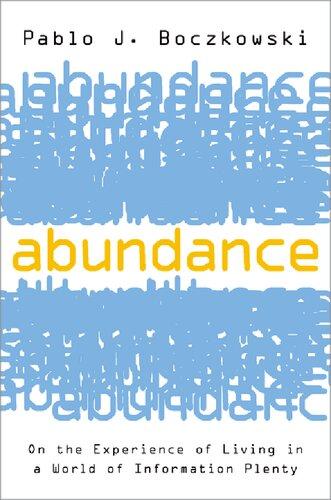
Abundance: On the Experience of Living in a World of Information Plenty 1st Edition Pablo J. Boczkowski
https://ebookmass.com/product/abundance-on-the-experience-ofliving-in-a-world-of-information-plenty-1st-edition-pablo-jboczkowski/
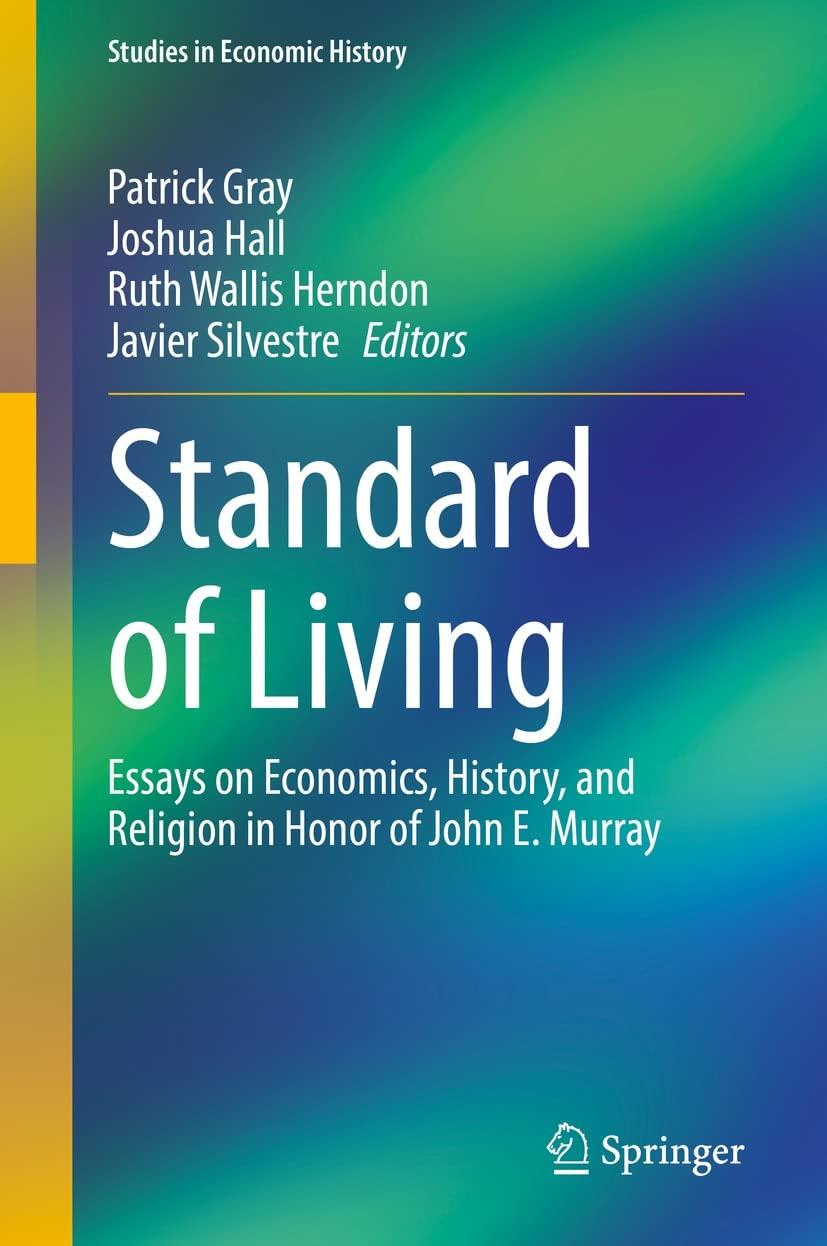
Standard of Living: Essays on Economics, History, and Religion in Honor of John E. Murray Patrick Gray
https://ebookmass.com/product/standard-of-living-essays-oneconomics-history-and-religion-in-honor-of-john-e-murray-patrickgray/
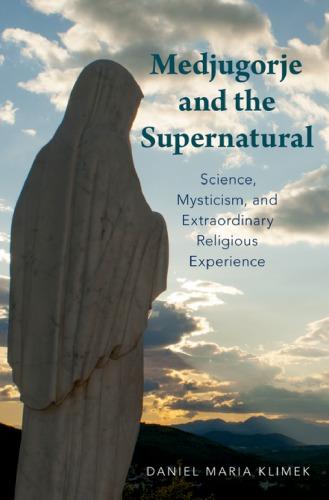
Medjugorje and the supernatural : science, mysticism, and extraordinary religious experience Klimek
https://ebookmass.com/product/medjugorje-and-the-supernaturalscience-mysticism-and-extraordinary-religious-experience-klimek/

Slow Living (EarthCent Universe Book 5) E. M. Foner
https://ebookmass.com/product/slow-living-earthcent-universebook-5-e-m-foner/
Ways of Living Religion
Ways of Living Religion provides a philosophical analysis of different types of religious experience – ascetic, liturgical, monastic, mystical, devotional, compassionate, fundamentalist – that focuses on the lived experience of religion rather than reducing it to mere statements of belief or doctrine. Using phenomenology, Christina M. Gschwandtner distinguishes between different kinds of religious experiences by examining their central characteristics and defining features, as well as showing their continuity with human experience more broadly. The book is the first philosophical examination of several of these types, thus breaking new ground in philosophical thinking about religion. It is neither a confessional treatment nor a reduction of the lived experience to psychological or sociological phenomena. While Gschwandtner’s treatment focuses on Christian forms of expression of these different types, it opens the path to broader examinations of ways of living religion that might enable scholars to give a more nuanced account of their similarities and differences.
Christina M. Gschwandtner is Professor of Philosophy at Fordham University and author of Reading Jean-Luc Marion (2007), Postmodern Apologetics? (2012), Degrees of Givenness (2014), Marion and Theology (2016), Welcoming Finitude (2019), and Reading Religious Ritual with Ricœur (2021), as well as many articles and translations at the intersection of phenomenology and religion.
Ways of Living Religion
Philosophical Investigations into Religious Experience
CHRISTINA M. GSCHWANDTNER
Fordham University

Shaftesbury Road, Cambridge CB2 8EA , United Kingdom
One Liberty Plaza, 20th Floor, New York, NY 10006, USA
477 Williamstown Road, Port Melbourne, VIC 3207, Australia
314–321, 3rd Floor, Plot 3, Splendor Forum, Jasola District Centre, New Delhi – 110025, India
103 Penang Road, #05–06/07, Visioncrest Commercial, Singapore 238467
Cambridge University Press is part of Cambridge University Press & Assessment, a department of the University of Cambridge.
We share the University’s mission to contribute to society through the pursuit of education, learning and research at the highest international levels of excellence.
www.cambridge.org
Information on this title: www.cambridge.org/9781009476782
DOI : 10.1017/9781009476812
© Christina M. Gschwandtner 2024
This publication is in copyright. Subject to statutory exception and to the provisions of relevant collective licensing agreements, no reproduction of any part may take place without the written permission of Cambridge University Press & Assessment.
First published 2024
A catalogue record for this publication is available from the British Library
A Cataloging-in-Publication data record for this book is available from the Library of Congress
ISBN 978-1-009-47678-2 Hardback
Cambridge University Press & Assessment has no responsibility for the persistence or accuracy of URLs for external or third-party internet websites referred to in this publication and does not guarantee that any content on such websites is, or will remain, accurate or appropriate.
Ways of Living Religion
Ways of Living Religion provides a philosophical analysis of different types of religious experience – ascetic, liturgical, monastic, mystical, devotional, compassionate, fundamentalist – that focuses on the lived experience of religion rather than reducing it to mere statements of belief or doctrine. Using phenomenology, Christina M. Gschwandtner distinguishes between different kinds of religious experiences by examining their central characteristics and defining features, as well as showing their continuity with human experience more broadly. The book is the first philosophical examination of several of these types, thus breaking new ground in philosophical thinking about religion. It is neither a confessional treatment nor a reduction of the lived experience to psychological or sociological phenomena. While Gschwandtner’s treatment focuses on Christian forms of expression of these different types, it opens the path to broader examinations of ways of living religion that might enable scholars to give a more nuanced account of their similarities and differences.
Christina M. Gschwandtner is Professor of Philosophy at Fordham University and author of Reading Jean-Luc Marion (2007), Postmodern Apologetics? (2012), Degrees of Givenness (2014), Marion and Theology (2016), Welcoming Finitude (2019), and Reading Religious Ritual with Ricœur (2021), as well as many articles and translations at the intersection of phenomenology and religion.
Ways of Living Religion
Philosophical Investigations into Religious Experience
CHRISTINA M. GSCHWANDTNER
Fordham University

Shaftesbury Road, Cambridge CB2 8EA , United Kingdom
One Liberty Plaza, 20th Floor, New York, NY 10006, USA
477 Williamstown Road, Port Melbourne, VIC 3207, Australia
314–321, 3rd Floor, Plot 3, Splendor Forum, Jasola District Centre, New Delhi – 110025, India
103 Penang Road, #05–06/07, Visioncrest Commercial, Singapore 238467
Cambridge University Press is part of Cambridge University Press & Assessment, a department of the University of Cambridge.
We share the University’s mission to contribute to society through the pursuit of education, learning and research at the highest international levels of excellence.
www.cambridge.org
Information on this title: www.cambridge.org/9781009476782
DOI : 10.1017/9781009476812
© Christina M. Gschwandtner 2024
This publication is in copyright. Subject to statutory exception and to the provisions of relevant collective licensing agreements, no reproduction of any part may take place without the written permission of Cambridge University Press & Assessment.
First published 2024
A catalogue record for this publication is available from the British Library
A Cataloging-in-Publication data record for this book is available from the Library of Congress
ISBN 978-1-009-47678-2 Hardback
Cambridge University Press & Assessment has no responsibility for the persistence or accuracy of URLs for external or third-party internet websites referred to in this publication and does not guarantee that any content on such websites is, or will remain, accurate or appropriate.
Ways of Living Religion
Ways of Living Religion provides a philosophical analysis of different types of religious experience – ascetic, liturgical, monastic, mystical, devotional, compassionate, fundamentalist – that focuses on the lived experience of religion rather than reducing it to mere statements of belief or doctrine. Using phenomenology, Christina M. Gschwandtner distinguishes between different kinds of religious experiences by examining their central characteristics and defining features, as well as showing their continuity with human experience more broadly. The book is the first philosophical examination of several of these types, thus breaking new ground in philosophical thinking about religion. It is neither a confessional treatment nor a reduction of the lived experience to psychological or sociological phenomena. While Gschwandtner’s treatment focuses on Christian forms of expression of these different types, it opens the path to broader examinations of ways of living religion that might enable scholars to give a more nuanced account of their similarities and differences.
Christina M. Gschwandtner is Professor of Philosophy at Fordham University and author of Reading Jean-Luc Marion (2007), Postmodern Apologetics? (2012), Degrees of Givenness (2014), Marion and Theology (2016), Welcoming Finitude (2019), and Reading Religious Ritual with Ricœur (2021), as well as many articles and translations at the intersection of phenomenology and religion.
Ways of Living Religion
Philosophical Investigations into Religious Experience
CHRISTINA M. GSCHWANDTNER
Fordham University

Shaftesbury Road, Cambridge CB2 8EA , United Kingdom
One Liberty Plaza, 20th Floor, New York, NY 10006, USA
477 Williamstown Road, Port Melbourne, VIC 3207, Australia
314–321, 3rd Floor, Plot 3, Splendor Forum, Jasola District Centre, New Delhi – 110025, India
103 Penang Road, #05–06/07, Visioncrest Commercial, Singapore 238467
Cambridge University Press is part of Cambridge University Press & Assessment, a department of the University of Cambridge.
We share the University’s mission to contribute to society through the pursuit of education, learning and research at the highest international levels of excellence.
www.cambridge.org
Information on this title: www.cambridge.org/9781009476782
DOI : 10.1017/9781009476812
© Christina M. Gschwandtner 2024
This publication is in copyright. Subject to statutory exception and to the provisions of relevant collective licensing agreements, no reproduction of any part may take place without the written permission of Cambridge University Press & Assessment.
First published 2024
A catalogue record for this publication is available from the British Library
A Cataloging-in-Publication data record for this book is available from the Library of Congress
ISBN 978-1-009-47678-2 Hardback
Cambridge University Press & Assessment has no responsibility for the persistence or accuracy of URLs for external or third-party internet websites referred to in this publication and does not guarantee that any content on such websites is, or will remain, accurate or appropriate.
for Lisa
Preface
For much of the twentieth century, intellectuals assumed that religion was on its way out the door. As Western society became more and more secular, religion was predicted to become increasingly less credible, and it was thought that religious convictions and behaviors would eventually just fade away. In terms of many traditional commitments to religious beliefs, practices, or ecclesial structures, that prediction has proven largely correct. At least in the West, many people question particular doctrines or their application to social and cultural realities, many churches are empty, religious vocations are few, religious orders are aging, and monasteries are closing down. Yet few scholars now think that religion as a phenomenon is disappearing. Rather, it has experienced resurgences even on the public and political stage in a variety of forms. Many people are again searching for private spiritual fulfillment. While monastic vocations may have declined in the West, people are still joining alternative religious communities or even ancient monastic orders. Fundamentalisms around the world are on the rise. Even traditional religious figures can still inspire adulation. Although many people may no longer engage in some of the old rituals, the need for ritual itself does not seem to have disappeared; it just finds a different expression in the invention of new rituals or the eclectic mixing of various traditions.1 People still seek community and desire to belong, even if the forms of such communal gathering have shifted and belonging is more transitory and ad hoc than it used to be in less
1 See, for example, Thomas Luckmann, The Invisible Religion: The Problem of Religion in Modern Society (New York: Macmillan, 1967); Meredith B. McGuire, Lived Religion: Faith and Practice in Everyday Life (Oxford: Oxford University Press, 2008); Tara Isabella Burton, Strange Rites: New Religions for a Godless World (New York: Public Affairs, 2020).
fast-paced cultures. Religion continues to be a reality in the contemporary world, and it calls for study and investigative understanding. Religion as a term is contested. Some sociologists and anthropologists argue that it is a purely Western construction that simply does not apply to Eastern “religions” – or even produces them as phenomena patterned on a Christian paradigm.2 Others assert that religion is simply so diverse and multifaceted – covering worldviews that acknowledge no God or gods, believe in no afterlife, have no sacred scriptures, celebrate no common rites – as to be utterly meaningless.3 Others have contended that it is nevertheless a significant phenomenon that has appeared in all human cultures in some recognizable form.4 For these scholars the term “religion” is generally employed to refer to the organized, communal orientation to what is of the highest value and often, albeit not always, toward what is considered “holy,” “other,” “sacred,” and at least on some level transcendent (i.e., going beyond the merely human or purely “natural”) and to the various beliefs and practices through which this orientation is expressed and lived. It is “religious” – rather than merely “spiritual” –when it refers to traditions that exceed purely personal experiences or preferences, although these larger and usually communal traditions can certainly be appropriated in personal ways.5 Most, if not all, human
2 See, for example, Timothy Fitzgerald, Discourse on Civility and Barbarity: A Critical History of Religion and Related Categories (Oxford: Oxford University Press, 2007) or Russell T. McCutcheon, Manufacturing Religion (Oxford: Oxford University Press, 1997). Tyler Roberts summarizes some of these developments in religious studies and criticizes several positions (especially Orsi, Braun, and Wasserstrom). See his Encountering Religion: Responsibility and Criticism after Secularism (New York: Columbia University Press, 2013), especially 23–82.
3 See, for example, David Chidester, Savage Systems: Colonialism and Comparative Religion in Southern Africa (Charlottesville: University of Virginia Press, 1996); Lionel M. Jensen, Manufacturing Confucianism (Durham, NC: Duke University Press, 1997); Richard King, Orientalism and Religion: Postcolonial Theory, India and “the Mystic East” (London: Routledge, 1999).
4 For a discussion of the controversy concerning the term (including the sources mentioned in the previous note) and a substantive argument for maintaining it, see Martin Riesebrodt, The Promise of Salvation: A Theory of Religion, trans. Steven Rendall (Chicago: University of Chicago Press, 2010), especially 1–70.
5 See my attempt at working out these distinctions in “Faith, Religion, and Spirituality: A Phenomenological and Hermeneutic Contribution to Parsing the Distinctions,” Special Issue on “Phenomenology, Spirituality, and Religion,” ed. Neal DeRoo, Religions 12.6 (2021), https://doi.org/10.3390/rel12070476. The entire issue is dedicated to the relation between spirituality and religion on phenomenological terms. For a different approach to the distinctions and relationships between the two terms, see Neal DeRoo, “What Counts as a ‘Religious Experience’? Phenomenology, Spirituality, and the Question of Religion,” Open Theology 4 (2018): 292–307.
cultures have been religious in this sense on some level, and very often this orientation to the sacred or the divine or what the society considered of highest value was expressed within and connected to its social, political, economic, literary, aesthetic, and various other cultural expressions. Religion is generally manifested not as an isolated “one-off” experience – although those obviously also occur – but usually as a way of life that touches on or is wrapped up with many other aspects of existence.6 Indeed, for those committed to its faith and practices, it is often the primary orientation of their lives, what frames, grounds, and gives meaning to everything else.
Philosophers – who have probably the highest percentage of atheists of any particular group, even within the already fairly secular academy –for the most part ignore religion as a phenomenon.7 When it is acknowledged in conversation, it is generally attributed dismissively to lingering superstition, stupidity, or infantilism, but it is rarely studied seriously. Even contemporary and politically pressing forms of religious expression such as fundamentalism have found hardly any philosophical treatment, although the phenomenon is investigated widely by psychologists, sociologists, anthropologists, theologians, religious studies scholars, historians, ethnographers, and others. When philosophy deals with religious questions at all, it tends to rehash old arguments about proofs for God’s existence or the issue of theodicy in terms of its compatibility of claims about the divine, which to a large extent miss the point of how religion is actually manifested in the world. Religious experience or practices and what
6 This is how Gavin Flood describes it in his Religion and the Philosophy of Life (of which I became aware only when this book was completed). Flood is not interested in distinguishing between types of religious experience, but argues for religion as directed toward the source of life and thereby giving meaning to life: “Religions seek to transform the human condition by bringing us closer to the source of life through practices that seek to bypass linguistic consciousness and through philosophies that seek to integrate human reality with a deeper reality of life. It is principally through religions that civilizations have sought human transformation, but art, music, and literature might also be seen in these terms too, although religions differ from these other cultural forms in offering and prescribing practices and ways of living that art, music, and literature cannot do.” Flood, Religion and the Philosophy of Life (Oxford: Oxford University Press, 2019), 28. He also interacts with several contemporary philosophical approaches in the second part of the book.
7 Some studies argue that the percentage of atheists among philosophers, at least in the USA, is between 60 and 98 percent, significantly higher than the rest of academia (30–40 percent), and incomparably higher than the broader population in the USA (2 percent). For one such study, see David Bourget and David J. Chalmers, “What Do Philosophers Believe?” Philosophical Studies 170.3 (2014): 465–500.
they mean for those who engage in them are not generally considered.8 In sum, philosophy has to a large extent relinquished the project of understanding these aspects of the human condition. Yet if philosophy is still committed to its Socratic love for wisdom, its Aristotelian insistence on wonder as the most basic human desire, galvanizing our search to investigate and understand, then it cannot close its eyes to important dimensions of human experience and existence. That is to say, philosophy has an obligation to grapple with our religious desires and experiences, to investigate their motivations, structures, and forms of expression, and to seek to understand more fully what role religious phenomena have played and continue to play in human existence.
A variety of approaches might be possible for such an attempt to understand religious forms of expression in human existence more fully. The present study employs phenomenology as the main philosophical methodology for understanding religious experience. It does not argue that phenomenology is the only or even necessarily the best tool for such investigation (doing so would require extensive comparison to other methodologies), although it does assume that phenomenology is an especially useful tool, the usefulness of which will emerge more fully through the investigation itself. Phenomenology is chosen as an appropriate method partly because it is the most viable philosophical approach currently on offer, but also because as an investigation of how phenomena manifest in experience, it is particularly well suited to investigate religious forms of experience. Such an investigation is not concerned with doctrinal questions, but with how such phenomena are experienced in people’s lives. Although many theological and philosophical approaches to religion still focus primarily on issues of faith or doctrine, claims about the divine, or aspects of creedal statements, religion manifests in the world at least as much in terms of experiences, practices, and ways of life.9 Investigating
8 This is bemoaned even by some analytical philosophers, who have generally focused on questions of belief, doctrine, or knowledge. See William P. Alston, Perceiving God: The Epistemology of Religious Experience (Ithaca: Cornell University Press, 1991); Terence Cuneo, Ritualized Faith: Essays on the Philosophy of Liturgy (Oxford: Oxford University Press, 2016); Nicholas Wolterstorff, Acting Liturgically: Philosophical Reflections on Religious Practice (Oxford: Oxford University Press, 2018). Howard Wettstein, who analyzes Jewish experience, also notes the disjunct between the work of analytical philosophy of religion and actual religious experience, arguing that “the deep truths that I claim to be put in touch with by religious tradition” cannot be equated with metaphysical claims. Wettstein, The Significance of Religious Experience (Oxford: Oxford University Press, 2012), 214.
9 Sociology and anthropology of religion – and the field of religious studies more broadly –have shifted almost entirely to investigating religion in terms of experiences and practices rather than solely in terms of beliefs or doctrines. This is of course not to say that belief
the variety of religious experiences hence is a more viable and perhaps more faithful approach to how “religion” is actually evident in people’s lives. It is one of the working hypotheses of this book that philosophy would be well served by such a shift to investigating religious experience rather than just religious belief or faith, and that focusing on experience might lead to a better understanding of religious phenomena.10 The Introduction provides some background on phenomenology and explains how the methodology is employed in this particular investigation.
Certain aspects of religious experience have made it into contemporary philosophical discussions. Some forms of political theology draw on mystical figures and texts for their “anarchic” potential (e.g., Simon Critchley, Giorgio Agamben), some philosophical investigations of subjectivity explore ascetic or mystical experiences (e.g., Michel Foucault, Pierre Hadot), and some feminist and psychoanalytic approaches seem especially fascinated by mysticism (e.g., Georges Bataille, Jacques Lacan, Luce Irigaray, Julia Kristeva, Amy Hollywood, and others). In a quite different vein, several contemporary French philosophers working in phenomenology have approached religious experience from a confessional
or doctrine has no relevance in religion. Often practices are influenced by or grounded in beliefs and themselves in turn shape beliefs and doctrines. Jewish philosopher Wettstein points out: “Indeed, strange as this seems to our ears, belief itself is never mentioned in the Hebrew Bible. There is talk of believing in God, i.e., trusting, relying upon God. But no talk of believing doctrines, believing that something is the case, no commandment – no explicit one at least – to believe anything.” Wettstein, Significance of Religious Experience, 131.
10 One of the first philosophers to consider the phenomenon of religious experience was William James, who in his seminal The Varieties of Religious Experience (originally delivered as the Gifford Lectures in 1901–1902) distinguishes between two types of experiences, what he calls the “healthy” (or optimistic) and “sick” (or pessimistic) soul, the latter requiring a second birth or repentance. He provides a large sampling of reports of unusual and highly emotional experiences. Adherence to traditional forms of religion, including asceticism, mysticism, and devotional life, he dismisses as “second-hand” and thus of little interest, searching instead for “original experiences” (15, 314–17, 342–86). He defines religion as “the feelings, acts, and experiences of individual men in their solitude, so far as they apprehend themselves to stand in relation to whatever they may consider the divine” (36). Most of the examples he cites are singular, one-time events, or radical conversion experiences. Indeed, he demands a focus on “violenter examples” rather than on those “of a more moderate hue” (52). Interestingly, he refers to his inquiry as a “psychological” investigation (12) and considers philosophy useful only for stamping “a warrant of veracity upon the religious man’s sense of the divine” (387), something he thinks it is unable to do (392–408). Despite his focus on singular experiences, he concludes that “not God, but life, more life, a larger, richer, more satisfying life, is, in the last analysis, the end of religion” (453). James, The Varieties of Religious Experience (New York: Penguin, 1987).
(predominantly Roman Catholic) perspective (e.g., Jean-Luc Marion, Jean-Yves Lacoste, Jean-Louis Chrétien, Emmanuel Falque). Yet in none of these cases – including the final category of thinkers who are clearly the most motivated by personal experiences of faith – does the primary goal seem to be an attempt to understand religious experience on its own terms, as it actually presents itself. Rather, usually the agenda appears primarily motivated by other factors, and the investigation of a particular religious expression – ascetic, mystical, liturgical, or otherwise – serves this other project. This often leads to a serious misreading of the texts or to claims about the experience that the people who underwent it would probably find difficult to recognize. A genuinely phenomenological investigation has to set aside such other agendas in order to allow the phenomenon to show itself as fully on its own terms as possible, to depict it as faithfully as possible, to unfold what is manifested rather than imposing parameters upon it, and to suspend judgment about it – whether those are judgments about its authenticity, its source, or its viability. That is to say, one tries to understand as fully and carefully as possible, while trying to be as aware as possible of the presuppositions and prejudices (even when they are salutary ones in Hans-Georg Gadamer’s sense) that are brought to the investigation.
Concretely, this particular study of religion pursues two hypotheses. First, it suggests that religious experiences are best understood as ways of life (Erfahrung) rather than isolated actions or one-time events (Erlebnis). Although the phenomena of belief, conversion, concrete acts of prayer, and so forth are important manifestations of religious adhesion, they are generally part of a larger life, one often motivated by faith, possibly entered into by conversion or changed by it in some form, characterized by continuous practices of prayer or ritual. While this makes the study considerably more complex, it also represents more closely how forms of religious expression are practiced and experienced and thus gives us a better chance of understanding the phenomena. The terminology of “understanding” (rather than “comprehension”) is here employed advisedly: This is an attempt to understand more fully and deeply, not a claim that every aspect of religious experiences can be fully comprehended and elucidated. Such experiences are often characterized by mystery and deal with what is for many people most intimate and most personal, which makes them at times difficult to access and to comprehend fully. Yet that does not mean that we should not attempt to reach greater understanding, even if the phenomena might not be comprehended in their entirety or every aspect brought to complete transparency – something similar is
probably true of other important dimensions of the human experience such as aesthetic or interpersonal ones.
The second hypothesis that motivates this study is that one may speak of different forms of religious experience and that, while some of them may overlap or even inspire each other, these are distinctive experiences that deserve separate investigations. Religious experience is not a single phenomenon but a variety of kinds of phenomena. For example, although ascetic practices may often precede mystical experiences for a particular individual, the two can be distinguished. While a mystic may live in a monastery, not all monastics are mystics and not all mystics were (or are) monastic. While monastics or ascetics could certainly become fundamentalist, few fundamentalists are either ascetic or monastic. Monastics often engage in charitable works, but many people motivated by vocations to hospitality and generosity have little taste for monastic life. These experiences, practices, and ways of life are sufficiently distinct – at least that will be the operating hypothesis – that they deserve separate investigations. This is why each chapter of the book is devoted to one such religious way of life or pattern of practices: ascetic experience (Chapter 1), ritual or liturgical experience (Chapter 2), monastic experience (Chapter 3), mystical experience (Chapter 4), devotional experience (Chapter 5), compassionate experience (Chapter 6), and fundamentalist experience (Chapter 7). Although these particular categories of religious experience or ways of religious life have been selected, no claims to comprehensiveness are thereby made. These appear to be some of the most important manifestations of religious experience in people’s lives in a variety of religious traditions, but there may well be others and their respective importance may well differ in particular religions. Hopefully these initial phenomenological explorations can open pathways for further investigation into other forms and manifestations of religious experience.
It is important to be clear here that this is not about different confessions, traditions, or denominations. The argument is not that there are important distinctions between different types of Protestantism, Roman Catholicism, and Eastern Orthodoxy or between different religious traditions. Rather, these are ways of living that cut across religious traditions and confessions. There are ascetic practices in Hinduism, Buddhism, Jainism, Islam, Christianity, and elsewhere. There are mystical experiences in Sufism, Hasidism, and various other traditions. There are currently fundamentalist movements and approaches in Christianity, Islam, Orthodox Judaism, Sinhalese Buddhism, and elsewhere. Even within
Christianity, there are Protestant, Catholic, and Orthodox ascetics; there are Protestant, Catholic, and Orthodox mystics; there are Protestant, Catholic, and Orthodox fundamentalists. This book is not about different religious traditions or different Christian confessions or denominations; it is a philosophical analysis of a variety of ways of living religion, using Christianity as the primary example, but neither as a paradigm nor as a summary of “types” of Christianity. The aim here is not to explore distinctions between Puritanism and Anglicanism, Evangelicals and Charismatics, the Amish and the Old Believers, and so forth. Nor is the investigation about discerning word-centered versus sacrament-centered spirituality. Even less is it concerned with specific doctrinal differences. It constitutes instead a philosophical attempt at understanding fundamental patterns of living religion within the human condition through an examination of such patterns within Christianity, broadly conceived, suggesting that such patterns are discernable across traditions or confessions, rather than solely within them.
This approach entails a further hypothesis that cannot be examined in this book, namely the possibility that such forms of experience are also more alike than different across religious traditions more broadly. For example, the ascetic experiences of the desert fathers may share important similarities with ascetic practices in Jainism, the mystical experiences of a Teresa of Avila or a Julian of Norwich may resemble in certain important ways what a Sufi or Hasid mystic may experience, fundamentalist experience in radicalized religious communities around the world may share essential characteristics, and so forth. While this hypothesis cannot be pursued in any detail in the present investigation, the book wants to open the possibility of further exploration of such parallels. This might also imply that instead of treating “religion” as a singular phenomenon, one could instead think of different types of religiosity. This study focuses primarily on Christian expressions in order to limit the scope to at least somewhat manageable proportions and also due to the author’s lack of expertise in other religious traditions. It is irresponsible to write extensively about Islam without a working knowledge of Arabic or to investigate Hinduism without reading Sanskrit. Even relying just on secondary sources in sociology and anthropology of religion describing phenomena in these traditions would expand the scope of the project far beyond anything that can reasonably be accomplished in one book – or even one lifetime. Rather, it requires the work of multiple scholars with expertise in these fields. But such wider investigation is an urgent and important matter! Philosophy of religion – whether in its analytic or its continental forms – has been
almost exclusively Christian.11 This has to change if it is really to be philosophy of religion and not just a philosophy of Christianity (or even of a particular tradition within Christianity, predominantly Anglo-American Protestant Reformed in the analytic approach and predominantly French Roman Catholic in the continental). That is not to say that it must always engage in comparative analyses, but it certainly should take seriously the variety of religious expression in the human experience.
One final but crucial point in the present approach should be clarified. Phenomenology of religion in the tradition of some early scholars (explored more fully in the Introduction) has been predominantly concerned with emphasizing the uniqueness of religion and hence arguing for the study of religion as a separate field with its own methodology.12 In contrast, the present study is concerned less with the way in which religious experience might be unique or utterly different from other experiences, but instead with the various ways in which it reflects on human experience more broadly or manifests something about the human condition as such, hence with the ways in which religious experiences are continuous with other human experiences. The book is not interested in arguing (or proving) that religion is somehow the best or most profound or most truly human part of us, as many of the French phenomenologists seem to do, at least by implication.13 This obviously does not mean that
11 For an account that includes some non-Christian examples, see Olga LouchakovaSchwartz, ed., The Problem of Religious Experience: Case Studies in Phenomenology, with Reflections and Commentaries (Cham: Springer, 2019) and the final three chapters of Jean-Luc Marion and Christiaan Jacobs-Vandegeer, eds., The Engima of Divine Revelation: Between Phenomenology and Comparative Theology (Cham: Springer, 2020), which investigate Islamic, Jewish, and Vedic forms of revelation, respectively.
12 One should also note that this is now being challenged by some religious studies scholars (cf. initial notes above and the Introduction).
13 Jean-Yves Lacoste, for example, ends the first part of Experience and the Absolute by claiming that experience before God “understood in its broadest sense, is the most human mode in which we can exist in the world or on the earth … man has for his true dwelling place the relation he seals with God or that God seals with him” and concludes the book as a whole by saying: “Man takes hold of what is most proper to him when he chooses to encounter God.” Lacoste, Experience and the Absolute: Disputed Questions on the Humanity of Man, trans. Mark Raftery-Skeban (New York: Fordham University Press, 2004), 98, 194. Henry’s entire project is to show that “man” participates as “son” within the very life of God and that Christianity alone has access to this truth about the human being. See especially Michel Henry, I Am the Truth: Toward a Philosophy of Christianity, trans. Susan Emanuel (Stanford: Stanford University Press, 2003). Falque often implies that the Christian theological dimensions of birth, life, and resurrection elevate the human above mere “animality.” See, for example, Emmanuel Falque, The Metamorphosis of Finitude: An Essay on Birth and Resurrection, trans. George Hughes (New York: Fordham University Press, 2012).
there is nothing unique about religious experience or that it should be conflated with aesthetic or other sorts of experiences. Anthony Steinbock may well be right that religious experience constitutes a particular kind of “verticality” that is parallel to, but distinct from, aesthetic, cultural, moral, or environmental experience.14 Yet the focus here is deliberately less on potential uniqueness than on continuities, partly because the kind of “variation” on dimensions of human experience that can be achieved by comparing religious experiences to other aspects of human experiencing allows the phenomenon to emerge more fully than would be accomplished by isolating it strictly or treating it in a vacuum. The wager is that religious experiences are part and parcel of human life and that a phenomenological investigation into their forms of expression can show how this is so.
After a brief phenomenological opening, each chapter will begin by providing some historical context, as appropriate for the topic under consideration, and a brief elucidation of the sorts of sources that have been employed to examine the phenomenon.15 This is followed by a detailed examination of a number of central characteristics of the type of religious experience. These are by no means the only characteristics the phenomenon displays, but they emerge as especially crucial features. Each chapter concludes with what might be called a “phenomenological sharpening” of the characteristics by comparing them to those of other ways of living religion while drawing on broader phenomenological insights. Although the relevant phenomenological scholarship is engaged – and is certainly in the background throughout – no attempt has been made to summarize
14 Anthony Steinbock, Phenomenology and Mysticism: The Verticality of Religious Experience (Bloomington: Indiana University Press, 2007), 1–19. On some level, this is also Marion’s argument, inasmuch as he suggests a variety of saturated phenomena that cover historical, aesthetic, affective, interpersonal, and religious dimensions of human experience. Unlike Steinbock, however, Marion seems fairly convinced that an experience of revelation is superior to these others and more profoundly “saturated” than they, as his notion of “double saturation” or paradox to a “second level” in the case of religious phenomena implies. See Jean-Luc Marion, Being Given: Toward a Phenomenology of Givenness, trans. Jeffrey L. Kosky (Stanford: Stanford University Press, 2002), 234–47.
15 Although this is not a historical study, the chapters follow a rough chronological order in terms of what seem like “high points” of expression for the particular type under investigation. It is important to note, however, that this does not map onto the way in which these experiences are expressed in other religious traditions. For example, Hindu ascetic expressions long predate Christian ones and may have inspired them to some extent. Similarly, while some forms of Hasidism and Sufism are roughly contemporaneous with the flowering of Christian mysticism, some are considerably later.
any of it in extensive detail, because the book would otherwise have exploded in length beyond any reasonable bounds.16
This is a philosophical project. While scholars of religion from other disciplines will hopefully find something of use here, and the study may also contribute to helping people who practice religion understand more fully what they are doing and give them a language to make sense of or further articulate its significance – on behalf of both of those audiences an effort has been made to avoid technical phenomenological jargon –the primary aim of the book is to take religion seriously philosophically, to show that philosophy can investigate religious experience as an important part of the human condition, just as it does for aesthetic, historical, or political experience. Paul Ricœur insists that “philosophy must comprehend everything, even religion.”17 A philosophical engagement with religion need not be apologetic – in the sense of proving the existence of a particular deity, judging the truth of specific doctrinal convictions, or advocating the adhesion to certain creeds or practices – but it can certainly be an exercise in greater understanding, in making sense of the ways in which religion manifests and is experienced, and in exploring why such experience might matter to human existence. This phenomenological exercise is undertaken with the hope that it will contribute to a greater understanding of ways of living religion, both in the sense of broadening and deepening what we understand about the phenomena and in the sense of cultivating greater understanding between scholars and those who practice religion. As far as we can tell from archeological evidence, such phenomena have been part of the human experience from its earliest beginnings, have shaped human history in manifold ways, are an important reality in the contemporary world, and still matter profoundly to many people. It is essential for philosophers to take this dimension of the human condition seriously and to think deeply about it.
16 For an introduction to many of the contemporary phenomenologists who discuss religion as a phenomenon, see my Postmodern Apologetics? Arguments for God in Contemporary Philosophy (New York: Fordham University Press, 2012). For a collection of primary sources, including of the separate type of phenomenology that gave rise to religious studies, see my edited volume The Phenomenological Study of Religion: Key Texts and Sources (Evanston, IL: Northwestern University Press, 2025).
17 He attributes this phrase to Lachelier. Ricoeur, Symbolism of Evil, trans. Emerson Buchanan (Boston: Beacon Press, 1967), 347–48.
Acknowledgments
Some of the material discussed here has been prepared by previous invitations, which are gratefully acknowledged. Preliminary ideas for Chapter 7 on fundamentalism were first presented as the “Pleshette DeArmitt Alumni Memorial lecture” at DePaul University in November 2015 and published in a heavily revised version as “Philosophical Reflections on the Shaping of Identity in Fundamentalist Religious Communities” in a special issue on “Phenomenology and the Post-Secular Turn: Reconsidering the Return of the ‘Religious’,” edited by Michael Staudigl and Jason Alvis, in the International Journal of Philosophical Studies 24.5 (2017): 704–24. I am grateful to Michael Staudigl for the initial invitation to contribute to the issue on post-secularism and also for his invitation to present on the topic in the context of a conference on “The Ends of Religious Community” in Vienna in May 2018, in which I explored some of the ideas in Chapter 7 in more detail. I seriously doubt I would have engaged the topic of fundamentalism without his repeated invitations to do so.
I first explored ideas about mysticism at the invitation of Jeffrey Bloechl in a presentation to the Philosophy and Theology Working Group at Boston College in January 2016. I am grateful not only for the invitation to speak, but also for the excellent questions that were raised in the discussion afterward. My colleague Shannon McAlister also gave me many useful pointers toward a variety of sources on mysticism and spirituality. I also want to thank former Fordham graduate students Vita Emery and Jesús Luzardo, who requested a tutorial on mysticism in the winter of 2016 and thus gave the original impetus for much of my reading and at least some of what I work out in Chapter 4. Their insightful questions and vigorous discussions of the material we read together were both stimulating
and invigorating. I hope they learned and enjoyed it as much as I did. (I am grateful also to our then graduate director Jennifer Gosetti-Ferencei and our then chair John Drummond for allowing me to do this while on sabbatical, unprecedented and hopefully not serving as a precedent.)
Chapter 2 on liturgical experience is informed in important ways by various discussions in a liturgy discussion group, to which Gregory Tucker, Tracy Gustilo, Will Rettig, Kyle Parrott, Evan Freeman, Harrison Russin, Christopher Sprecher, Timm Heinbokel, and Samuel Bauer contributed at various points, partly in person (in the fall of 2015 and the academic year 2016–2017) and online (January 2021–May 2022). I have profited immensely from their expertise, dedication, and our shared frustrations. I also learned much about liturgy from doctoral work I undertook at Durham University, under the supervision of Andrew Louth, and with the support of a sabbatical from the University of Scranton in the 2009–2010 academic year, which I here gratefully acknowledge. I would also like to thank Fordham University, which made more concentrated work on this project possible in the form of faculty fellowships in the 2015–2016 and 2020–2021 academic years, and the Institut catholique de Paris, especially Emmanuel Falque, who hosted me so generously and graciously in spring 2016. The results of the first fellowship were published as Welcoming Finitude: Toward a Phenomenology of Orthodox Liturgy (New York: Fordham University Press, 2019) and have obviously influenced Chapter 2 on liturgical experience here.
Chapter 1 on asceticism is deeply informed by the work I did for a presentation on the role of the heart in asceticism in the context of a conference Anthony Steinbock organized on the topic of “Perspectives on the Heart” in October 2020, later published as “Guarding the Heart: The Phenomenality of the Heart in Early Christian Asceticism,” Phenomenology and Perspectives on the Heart, ed. Anthony Steinbock (Cham: Springer, 2022), 19–50. I am grateful to him for the possibility of examining this topic and for the fruitful discussion after the presentation. I received some pointers for Chapter 6 on compassionate experience from Susan Holman, and the chapter is partly inspired by her own important work on that topic. Michael Au-Mullaney and Esther Bowen read Chapter 5 on devotional experience, and both gave me very valuable feedback. The book as a whole profited immensely from the preparation for and discussions in a graduate course called “Phenomenology and Religious Experience” in the spring 2018 semester. I am most grateful to the students for tolerating this experiment in “doing phenomenology” on religious experience together and for their stimulating contributions to the discussions.
